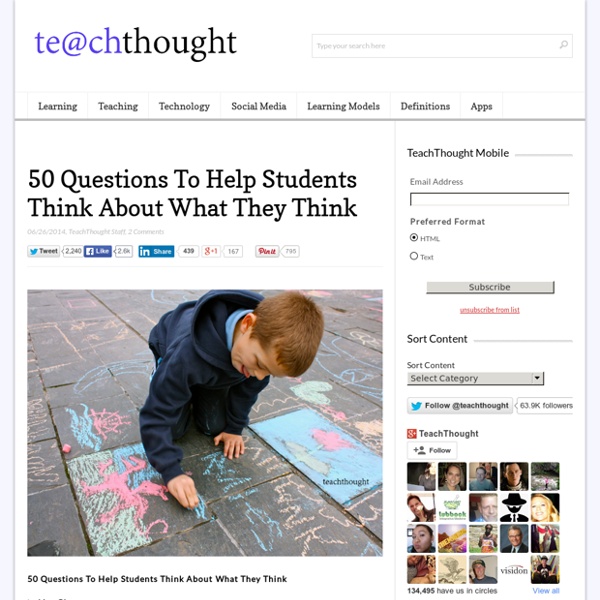50 Questions To Promote Metacognition In Students

Instilling Trust
It is our job to teach our children independence. We need that independence to go hand in hand with trust. We need to trust that our children will act within the set of boundaries that we have defined for them. Am I intentionally teaching trust? Keep every promise. Read this blog for more articles. Copyright 2014 © Cindy Terebush All Rights Reserved
A Four-Phase Process For Implementing Essential Questions
by Grant Wiggins, Ph.D, AuthenticEducation.org We had a delightful visit to The School of the Future in New York City the other day. Lots of engaged kids, a great blend of instruction and constructivist work, and an obvious intellectual culture. And as the picture illustrates, everywhere we went we also saw helpful visual reminders of the big ideas and essential questions framing the work we were watching: School of the Future staff have long been users of UbD tools and ideas. But far too often over the years I have seen plenty of good stuff posted like this – but no deep embedding of the Essential Question (EQ) into the unit design and lessons that make it up. Merely posting the EQs and occasionally reminding kids of it is pointless: the aim is to use the question to frame specific activities, to provide perspective and focus, to prioritize the course, and to signal to students that, eventually, THEY must – on their own – pose this and other key questions. Same thing. Related Posts
Connectivist Learning Theory - Siemens
Connectivist learning theory, by George Siemens "A central tenet of most learning theories is that learning occurs inside a person. Even social constructivist views, which hold that learning is a socially enacted process, promotes the principality of the individual (and her/his physical presence – i.e. brain-based) in learning. Connectivism is the integration of principles explored by chaos, network, and complexity and self-organization theories… "what is it that's unique about connectivism. 1. 2. 3. 4. 5. - Learning and knowledge rests in diversity of opinions. - Learning is a process of connecting specialized nodes or information sources. - Learning may reside in non-human appliances. - Capacity to know more is more critical than what is currently known - Nurturing and maintaining connections is needed to facilitate continual learning. - Ability to see connections between fields, ideas, and concepts is a core skill. ( Dave Pollard: 1. 2. 3. 4.
Bloom: The Evolution of Life on Earth and the Birth of Ecology (Joan As Police Woman Sings Emily Dickinson) – The Marginalian
This is the first of nine installments in the animated interlude season of The Universe in Verse in collaboration with On Being, celebrating the wonder of reality through stories of science winged with poetry. See the rest here. Two hundred million years ago, long before we walked the Earth, it was a world of cold-blooded creatures and dull color — a kind of terrestrial sea of brown and green. There were plants, but their reproduction was a tenuous game of chance — they released their pollen into the wind, into the water, against the staggering improbability that it might reach another member of their species. No algorithm, no swipe — just chance. But then, in the Cretaceous period, flowers appeared and carpeted the world with astonishing rapidity — because, in some poetic sense, they invented love. Once there were flowers, there were fruit — that transcendent alchemy of sunlight into sugar. Without flowers, there would be no us. No poetry. No science. No music.
Related:
Related:



